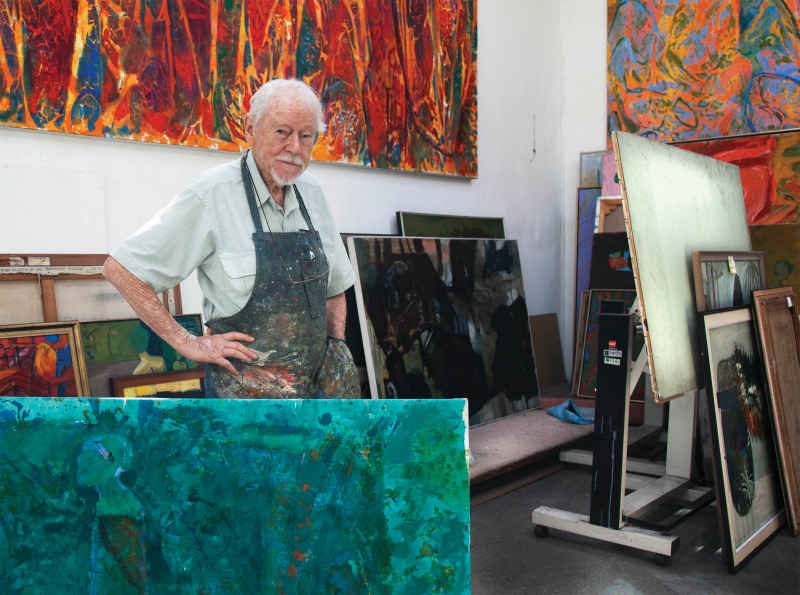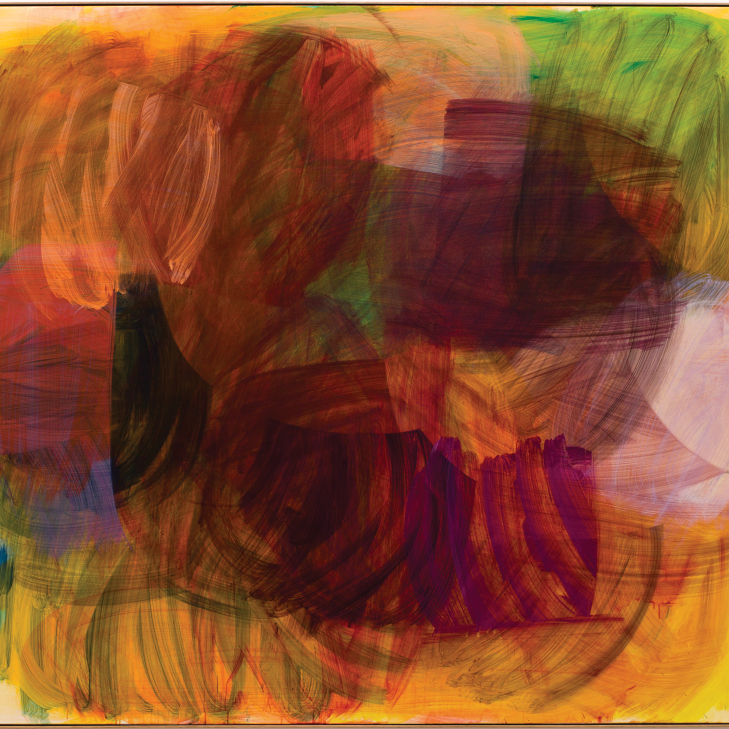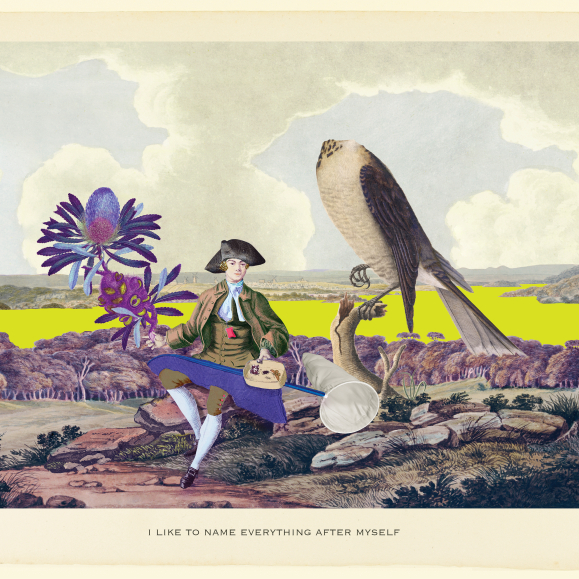Guy Warren: Life’s Great Wanderings
A centenarian and a visionary, Guy Warren has long been counted among the greats of Australian art, and he’s not finished yet.
Words: Sasha Grishin
Photography: Riste Andrievski
Guy Warren is widely regarded as one of the most important senior figures in Australian art. Not because he is a centenarian, but because of the exceptional and unusual contribution he has made to the visual culture of this country.
He was born in 1921 in Goulburn in rural NSW to a father who was a pianist and a mother who played the violin. It was a family receptive to the arts and to the natural environment, but he grew up during The Great Depression when the pressure was on economic survival and art was thought of as commercial art rather than as art for art’s sake. He fell into being a professional artist with a long and celebrated career almost by accident – it was as much a surprise to the artist as to anyone else.
In 1941, when Warren commenced his war service, he was sent to the Canungra Military Area in the Gold Coast hinterland in South East Queensland. At the Land Warfare Centre, he was prepared for jungle warfare in a thick rainforest.
Although the training was tough, he fell in love with the rainforest, with its steep ravines and gullies, rushing streams and lush vegetation. This became his “soul country” that has since permeated much of his art. When sent into combat in 1942, it was into Papua, New Guinea and Bougainville Island, where Staff Sergeant Warren was once more surrounded by jungle with its exceptional fecundity of plant and insect growth. His love affair with the rainforest was to last a lifetime, so when he married after the war, he took his bride to Canungra for their honeymoon.
The Commonwealth Rehabilitation Training Scheme took Warren, together with scores of other future artists including Tony Tuckson, Robert Klippel, Tom Bass, Herbert ‘Bert’ Flugelman and John Coburn, to study art at East Sydney Technical College (later known as the National Art School). Many of these artists became lifelong friends. In 1950, Warren moved to London with his wife Joy for 18 months to continue his studies at the Chelsea School of Art, London School of Art and the Central School of Arts and Crafts. The London sojourn lasted eight years and when he returned to Australia, accompanied by his wife and two children, he had acquired a painter’s toolbox of skills. However, despite his best efforts, he could not be drawn into British modernism or paint the park-like English landscape.
While still in London and trying to find his feet, he painted a number of memory paintings based on his experiences with the local Indigenous people in Bougainville where he was amazed by their body decorations and innate sense of patterning. By chance, on television he had seen a BBC documentary about the Mount Hagen dancers in the New Guinea highlands and enquired whether he could purchase some of the photographic stills as source material for his paintings. It turned out that the young film producer was David Attenborough who was more than happy to give him some photographs and Warren rewarded him with a painting. The two have remained friends ever since.
The attraction to New Guinea that both he and Attenborough shared was for people living as one with their environment, something he also experienced later in Aboriginal Australia. The desire to be part of the landscape, the environment, and to paint from within and move inside the landscape rather than observing it from outside has been central to Warren’s practice, and is still evident in his most recent paintings.
He bought a block of rainforest land at Jamberoo, on the south coast of NSW near Kiama, and the sculptor Flugelman became his neighbour. While spending time teaching and working in various administrative roles, he would spend weeks in the rainforest painting. In 1985 he was awarded the Archibald Prize for his painting of his neighbour from Jamberoo, titled Flugelman with Wingman.
A recurring theme in Warren’s art that is evident in his recent paintings is the idea of the figure not only being in the landscape but appearing as part of this landscape. For many years, like his great idol in Australian art Ian Fairweather, he would paint in acrylic, standing over the canvas on the floor mapping out the forms of the landscape and the figures. In more recent years, when the physical effort of standing over the canvas became too arduous, he turned to painting at his easel in oils with a heightened tactility and frequently a great lightness of touch. Some of his most successful late works are highly textured pieces in oil stick on paper where there is a sense of illusion – a visionary fleeting image – a spiritual quality. The rainforest is rarely distant from his art, along with the idea of overlapping forms that surround you from all sides and that encourage you to call upon your imagination to travel within them.
For Warren, the art process involves something intuitive and not a programmed act and there is a stage where the painting or drawing takes over and the artist’s intellect moves to the background. As he recently said, “The great problem in making art is this battle we all have between intuition and logic; one can become too logical about the work. If one could only get back to the innocence of childhood – where one doesn’t think too much but simply does – then I think it would be a great deal better.”
In 2021 Warren became one of Australia’s best-known artists as the subject of Peter Wegner’s portrait of the artist at the age of 100, for which Wegner was awarded the Archibald Prize on the Archibald’s 100th anniversary. Being 100 as an artist in Australia is no longer such as rare phenomenon – Erwin Fabian and Inge King are two other recent examples. What is changing is that we now look up to artists like Warren as elders who have attained experience and wisdom that they share with us through their art.
NICHOLAS THOMPSON – FOUNDER AND DIRECTOR, NICHOLAS THOMPSON GALLERY, MELBOURNE:
I have represented Guy Warren since I opened my gallery in 2015. In addition to his considerable history as an important Australian artist who has exhibited since the 1950s, I am amazed at how vibrant, layered, joyous and relevant Guy’s work continues to be. His paintings and drawings have a continuing engagement with the natural environment and man’s relationship with it, themes which remain significant and very contemporary. Guy celebrated his 100th birthday this year, with several commemorative exhibitions at the National Art School and the University of Wollongong Gallery. Peter Wegner’s Portrait of Guy was awarded the 2021 Archibald Prize and Guy was featured in ABC’s Finding The Archibald. It is terrific to see him celebrated so widely in his 100th year.
The last few years have been an exciting time for Guy and it feels like a real reassessment of his work has occurred, with considerable interest from media and institutions. Prices have increased accordingly, but for a significant Australian artist his work remains accessible, especially his drawings and works on paper. Guy is a truly unique artist in that his work appeals to both seasoned collectors and followers of Australian art history, but also to younger buyers – his colour-driven and expressionistic works have attracted a good following among new collectors. It is really rewarding to see a new generation respond to his work.
GLENN BARKLEY – ARTIST, WRITER AND CURATOR
I first met Guy when I studied at the University of Wollongong (UOW) where Guy was the director of the UOW Art Collection. Guy has had a long-sustained career that has constantly been in a state of reinvention and re-invigoration.
I think Guy found his themes quite early – the figure in the landscape and humankind’s relationships to that landscape. These are big themes to which you can constantly loop back. I think Guy also had the good fortune, although it may not have felt like that at the time, of being at the experimental Tin Sheds in the early 1970s when the whole practice of painting was in a state of flux. This lead to some of his most radical work, like running a painting through a washing machine. He was able to reconstruct a new kind of painting practice.
Guy’s continuing influence is in his constant depiction of the landscape and humankind’s relationship to it – something that seems more relevant now than when he began. I think Guy has always had doubt about art’s potential to solve problems of the world – but I don’t think that has deterred his belief in the value of making and of asking these big global questions and there is something really admirable about that.
Over such a long career there are also pockets of his practice that still need to be unravelled. And Guy is still making in the studio, trying to understand the world – so there is great work still to come.
This article was originally published in Art Collector issue 99, January-March 2022.









